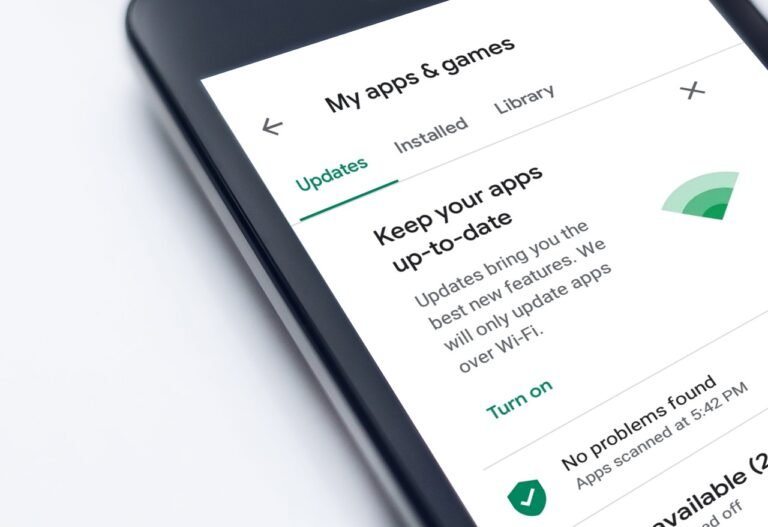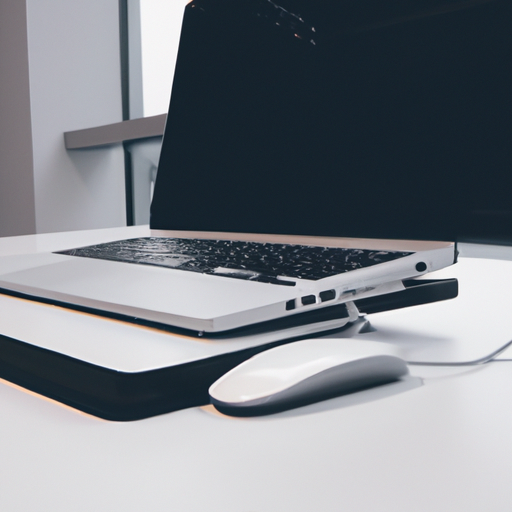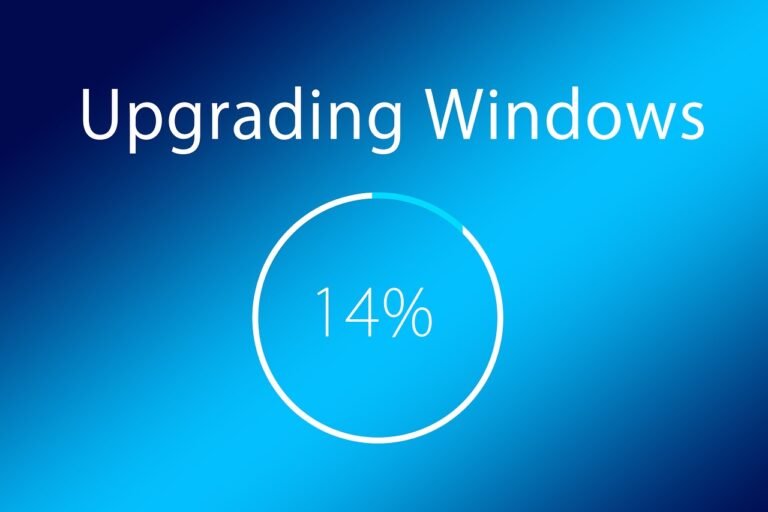How Do I Determine The Right Screen Size For My Laptop?
So, you’re in the market for a new laptop and you’re faced with the daunting task of figuring out the perfect screen size for your needs. With so many options available, it can be overwhelming to make the right decision. But fear not, because we’re here to help you navigate through this screen-size maze. In this article, we’ll explore some factors you should consider when determining the right screen size for your laptop, ensuring that you find the perfect fit for your everyday use and personal preferences. Say goodbye to squinting at a screen that’s too small or lugging around a bulky laptop with a screen that’s too big – let’s find your laptop’s ideal match!

This image is property of pixabay.com.
Factors to consider when determining screen size
Choosing the right screen size for your laptop is an important decision that can greatly impact your overall user experience. There are several factors you should consider when determining the appropriate screen size for your needs. These factors include usage, portability, and resolution.
Usage
One of the most important factors to consider when determining screen size is your intended usage. Think about how you will use your laptop on a day-to-day basis. Will you primarily be using it for general web browsing and basic tasks, or do you plan on using it for more demanding applications such as gaming or graphic design?
For general use and browsing, a smaller screen size of around 11-13 inches may be sufficient. These sizes are compact and lightweight, making them ideal for on-the-go use. However, if you plan on using your laptop for gaming, multimedia, or graphic design, you may want to consider a larger screen size for a more immersive experience.
Portability
Another important factor to consider is the portability of your laptop. If you frequently travel or need to carry your laptop around, a smaller screen size may be more suitable. Smaller laptops are thinner and lighter, making them easier to transport. However, if you primarily use your laptop in a fixed location, such as at home or in the office, a larger screen size may provide you with a better viewing experience.
Resolution
The resolution of a laptop screen refers to the number of pixels it can display. Higher resolutions generally result in sharper and more detailed images. When choosing a screen size, it’s important to consider the resolution that is supported. A larger screen size may provide more space for multitasking and viewing content, but you should ensure that the resolution is sufficient to maintain image quality.
Common laptop screen sizes
Laptop screen sizes can vary significantly, and it’s important to understand the common sizes available in the market. Here are the most common laptop screen sizes:
11-13 inches
Laptops in this range are typically smaller and more portable. They are ideal for users who prioritize mobility and need a compact laptop for on-the-go use. These smaller screen sizes are great for basic tasks, web browsing, and document editing.
14-15 inches
Laptops with screen sizes ranging from 14 to 15 inches strike a balance between portability and usability. They offer a larger viewing area compared to smaller sizes, making them suitable for tasks that require a bit more screen real estate, such as multimedia consumption or light gaming.
17 inches
For those who prioritize a larger display, laptops with a 17-inch screen size are a great option. These larger laptops provide ample space for multitasking, gaming, and content creation. However, they are less portable and may not be suitable for frequent travelers or individuals with limited desk space.
Large screen sizes
In addition to the common sizes mentioned above, there are also laptops available with even larger screen sizes, such as 18 or 20 inches. These laptops are typically designed for specific professional use cases, such as video editing or 3D modeling, where a larger screen can greatly enhance productivity. However, they are less common and not suitable for everyday use.
How to measure screen size
Measuring the screen size of a laptop is a simple process that can be done using two primary methods: diagonal measurement and aspect ratio.
Diagonal measurement
The diagonal measurement refers to the distance between opposite corners of the laptop’s screen. To measure the diagonal screen size, start at one corner of the screen and measure diagonally to the opposite corner. This measurement is usually expressed in inches and is the most common way of specifying laptop screen sizes.
Aspect ratio
The aspect ratio refers to the proportional relationship between the width and height of the screen. The two most common aspect ratios for laptops are 16:9 and 16:10. The 16:9 aspect ratio is more widely used and provides a wider view, making it suitable for multimedia and gaming. The 16:10 aspect ratio offers slightly more vertical space, making it ideal for tasks that require more vertical scrolling, such as coding or document editing.
Optimal screen size for different tasks
The optimal screen size for your laptop will depend on the specific tasks you intend to perform. Here are some general recommendations for different usage scenarios:
General use and browsing
For general use and web browsing, a screen size between 11 and 15 inches should be sufficient. These sizes offer a good balance between portability and usability, allowing you to comfortably view websites, read documents, and perform basic tasks.
Gaming and multimedia
If you plan on using your laptop for gaming or multimedia consumption, a larger screen size is recommended. A screen size of 15 inches or larger will provide a more immersive experience, allowing you to fully enjoy the visual and audio elements of games and videos.
Graphic design and content creation
Graphic design and content creation tasks often require a larger screen size to accommodate complex software interfaces and provide sufficient workspace. A screen size of 15 inches or larger, preferably with a higher resolution, will offer the best experience for these tasks.
Programming and coding
For programming and coding, a larger screen size can greatly improve productivity. This allows you to view multiple lines of code simultaneously and have additional space for documentation or debugging tools. A screen size of 15 inches or larger, preferably with an aspect ratio of 16:10, is recommended for coding.

This image is property of pixabay.com.
Display quality considerations
When choosing a laptop screen size, it’s important to consider factors that affect display quality. These include screen resolution, pixel density, screen technology, brightness, and color accuracy.
Screen resolution
Screen resolution refers to the number of pixels that can be displayed on the screen. Higher resolutions result in sharper and more detailed images. When choosing a screen size, make sure to consider the resolution that is supported by the laptop. For example, a 15-inch laptop with a Full HD (1920×1080) resolution will provide a crisper image compared to a similar-sized laptop with a lower resolution.
Pixel density
Pixel density is the number of pixels per inch of the screen. Higher pixel density results in sharper and more detailed visuals. When choosing a laptop screen size, consider the pixel density to ensure that the images and text are clear and easy to read. Higher pixel density is particularly important for tasks that involve a lot of reading, such as coding or document editing.
Screen technology
The technology used in the laptop screen can also affect the display quality. There are different types of screen technologies available, such as LCD, LED, and OLED. OLED screens generally offer better contrast, vibrant colors, and deeper black levels compared to LCD or LED screens. However, they can be more expensive and may not be available in all screen sizes.
Brightness and color accuracy
Brightness and color accuracy are important factors to consider, especially if you will be working with multimedia content or graphic design. Look for laptops with higher brightness levels, measured in nits, to ensure that the screen is visible even in well-lit environments. Additionally, consider laptops with good color accuracy to ensure that the colors are displayed as intended.
Ergonomics and user comfort
Choosing the right screen size is not only about the visual experience but also about ergonomic considerations and user comfort. Here are some factors to keep in mind:
Eye strain
Using a laptop with a screen that is too small can strain your eyes, leading to discomfort or even long-term vision problems. On the other hand, using a laptop with a large screen may require you to constantly adjust your gaze, resulting in neck and eye strain. Strike a balance between screen size and viewing comfort to prevent unnecessary discomfort.
Keyboard and touchpad placement
Consider the placement of the keyboard and touchpad when choosing a laptop screen size. A smaller laptop may have a cramped keyboard and touchpad, which can be uncomfortable to use for extended periods. Similarly, a larger laptop may require you to stretch your arms or adjust your posture to reach the keyboard and touchpad. Test different sizes to find the one that offers the most comfortable typing and navigation experience.
Weight and size
The size and weight of the laptop are crucial factors to consider for portability and ease of use. A smaller laptop will generally be lighter and easier to carry, making it more suitable for travelers or individuals who frequently need to move around. However, if you prefer a larger screen size for better viewing, be prepared for a slightly heavier laptop. Find a balance between screen size and portability that suits your specific needs.

This image is property of pixabay.com.
Budget considerations
Budget is an important consideration when choosing a laptop screen size. Larger screens and higher resolutions generally come at a higher cost. Consider your budget and weigh it against your intended usage and priorities. It’s important to find a laptop that offers the right balance of screen size, quality, and features within your price range.
Price range
Laptop prices can vary significantly depending on the brand, specifications, and screen size. Smaller laptops tend to be more affordable, while larger laptops with higher resolutions or specialized features may come with a higher price tag. Determine your budget in advance and research the options available within your price range.
Value for money
When considering budget, also think about the value for money. It’s not just about the price, but also about what you get for the price. Consider the overall specifications, build quality, warranty, and customer support offered by the manufacturer. It’s important to strike a balance between cost and quality to ensure that you are getting the best value for your investment.
Practical tips for choosing the right screen size
Here are some practical tips to help you choose the right screen size for your laptop:
Try before you buy
If possible, try out different screen sizes in person before making a purchase. Visit a local electronics store and spend some time using different laptops to get a feel for the screen size and overall user experience. This hands-on approach will give you a better understanding of the screen size that suits your needs and preferences.
Consider future needs
While it’s important to choose a screen size based on your current needs, also consider your future needs. Think about how your usage patterns may change over time and whether you may require a larger screen for new tasks or applications. Investing in a slightly larger screen size now may save you from needing to upgrade in the near future.
Check compatibility
When choosing a laptop screen size, also consider compatibility with other devices or accessories you may already own or plan to use. For example, if you have an external monitor or docking station, make sure it supports the screen size and resolution of your laptop. Additionally, consider the size and weight of your laptop when choosing a laptop bag or case.
Read customer reviews
Before making a final decision, take the time to read customer reviews and ratings of the laptop models you are considering. Customer reviews can provide valuable insights into the screen quality, performance, and overall user experience of a specific laptop. Look for reviews from users who have similar usage patterns to yours to get a better idea of how a particular screen size will work for you.

Conclusion
Choosing the right screen size for your laptop requires careful consideration of various factors, including usage, portability, resolution, display quality, ergonomics, budget, and practical tips. By taking the time to evaluate these factors and weighing them against your specific needs, you can find the perfect screen size that enhances your overall user experience and productivity. Remember, it’s not just about finding the largest screen size available, but rather finding the right balance between screen size and all the other factors that contribute to a satisfying computing experience.







